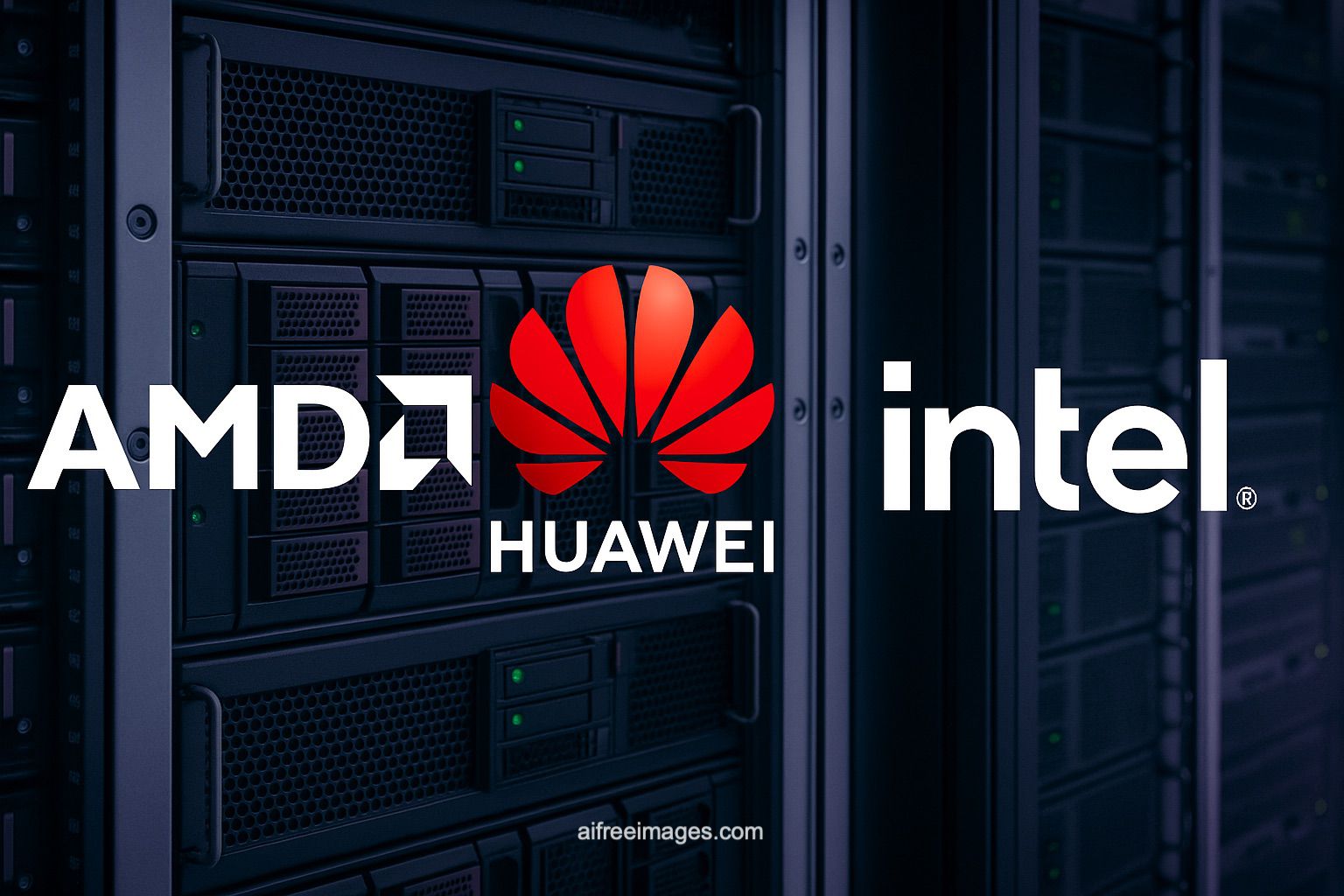A groundbreaking movement is shaking the global server processor market. Both Intel and AMD have simultaneously reduced the prices of their high-end CPUs, with discounts exceeding 50% on some models. The remarkable aspect isn’t just the size of these discounts but the uncanny timing between the two giants, long-standing rivals that seldom align in their commercial strategies.
Most plausible explanation points toward China: the arrival of Huawei KunPeng 930 (Kirin 930), a processor with a proprietary architecture featuring up to 40 cores per chiplet and configurations reaching 160 cores per motherboard, appears to have triggered alarms in Silicon Valley.
Historically, the timing for these discounts is paradoxical. The server market is experiencing an unprecedented boom driven by AI, cloud computing, and hyperscale data centers. Demand for processors has skyrocketed, with CPU sales described as “flying off the shelves.” Yet, the figures tell their own story:
– An AMD EPYC 9965 (Turin) with 192 cores, previously costing $14,813, now sells for $9,713.
– An Intel Xeon 6980P with 128 cores has dropped from $12,460 to just $5,836.
These discounts affect the full range of server products from both companies, from AMD’s EPYC Turin and Genoa to Intel’s Sapphire Rapids, with reductions between 30% and 55%.
The suspicion that Huawei’s emergence has driven this aggressive pricing is strengthened by recent leaks about the KunPeng 930:
– 40 cores per die, with up to 91 MB of L3 cache.
– Support for DDR5 memory across 12 channels.
– Minimum configurations of 80 cores (2 dies) and up to 160 cores per rack in dual-socket motherboards.
– Fabricated on a TSMC N5 node for the CPU cores, while the I/O die might originate from SMIC at 14 nm.
If confirmed, the KunPeng 930 would position Huawei among the top players in the server market—a segment currently dominated by Intel and AMD.
A key point of controversy is TSMC’s alleged involvement. The Taiwanese manufacturer is prohibited from producing advanced chips for Huawei under US and EU sanctions. If the cores of the KunPeng 930 are indeed fabricated on the N5 node, it could spark a major geopolitical conflict:
– For the West, it would be a breach of sanctions.
– For China, it would be a significant strategic win in the ongoing tech war over semiconductor dominance.
While official confirmation is pending, analysts believe Huawei might be leveraging indirect agreements, intermediaries, or previous TSMC inventory before restrictions tightened.
Both Intel and AMD’s synchronized price cuts reflect an acute awareness of this risk. If Huawei successfully deploys its processor en masse within China, it could:
– Undermine AMD and Intel’s market share in the second-largest server market.
– Accelerate China’s strategy of technological sovereignty by reducing dependence on foreign chips.
– Expedite the shift toward ARM architectures, such as the Taishan V120 powering the KunPeng 930, over traditional x86.
These discounts appear aimed at protecting their global market share and discouraging clients from exploring Chinese alternatives.
This scenario echoes the past when AMD’s EPYC processors, offering more cores and better value, disrupted Intel’s dominance—except now, Huawei, backed by the Chinese government, with privileged access to its domestic market, could replicate that success faster and on a larger scale across Asia.
The stakes extend to the future of cloud computing. The price war and Huawei’s entry have strategic implications:
– For hyperscalers like Amazon, Microsoft, Google, Alibaba, and Tencent, it offers leverage to negotiate lower prices with Intel and AMD.
– For AI and high-performance computing industries, it introduces a new potential hardware supplier capable of large-scale supply.
– For geopolitics, it adds a new chapter in the US-China semiconductor rivalry.
In summary, the simultaneous pricing cuts by Intel and AMD signal a new phase of intense competition in server CPUs. Facing Huawei’s potential market entry, the existing US duopoly may confront its first serious challenge in this domain. The key question is no longer if but when Huawei will establish itself as the “third giant” in server processors.

